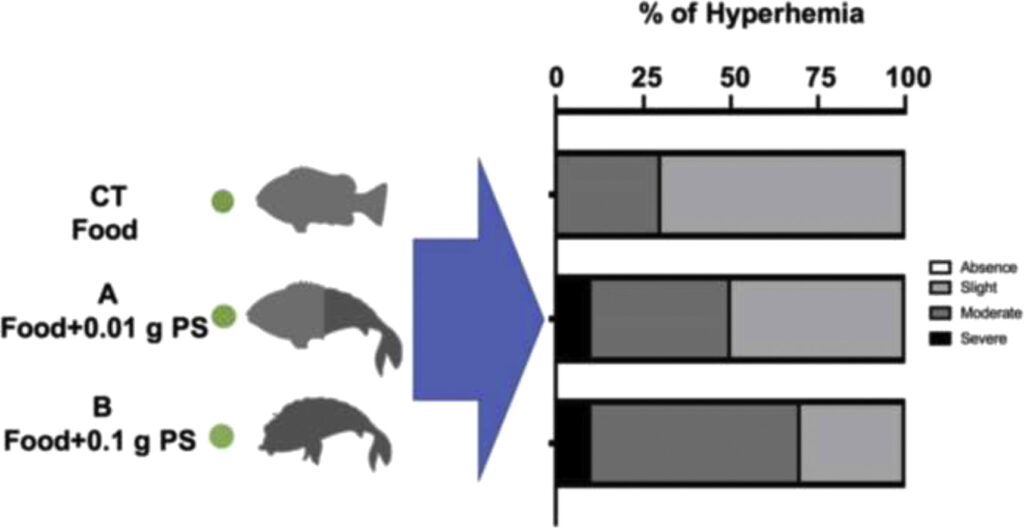Microplastic ingestion cause intestinal lesions in the intertidal fish Girella laevifrons

We exposed juvenile intertidal fish to different amounts of Poly(styrene-co-divinylbenzene) microplastics in their diet. We fed ten individuals with pellets containing 0.01 g, another ten fish with pellets containing 0.1 g of PS, and ten fish without plastic as control. After 45 days of treatment, the whole intestine was removed, and the histological evaluation started immediately. We evaluated inflammation due to leukocyte infiltration (Lk), circulatory disorders like Hypermeia (Hyp), and regressive changes in the intestinal tissue, assessing Crypt cell loss (Ccl) and Villi cell loss (Vcl). The severity of the lesions increased according to the microplastic concentration. In the fish group feeding on microplastics, we found that leukocyte infiltration and hyperemia were more severe in the higher exposure group compared to the lower exposure; and crypt cell loss and villi cell loss increased significantly due to Poly(styrene-co-divinylbenzene) microplastic physical abrasion.
